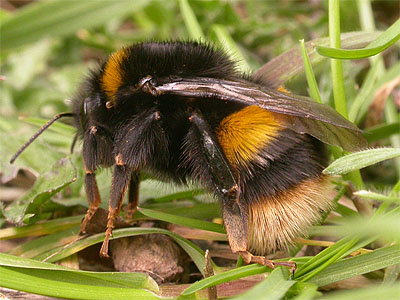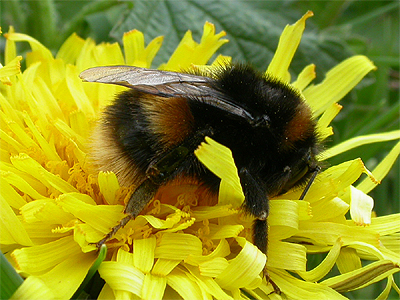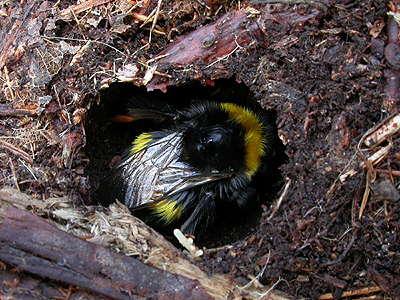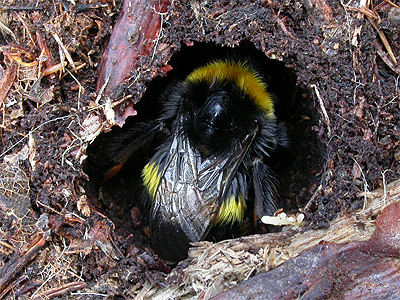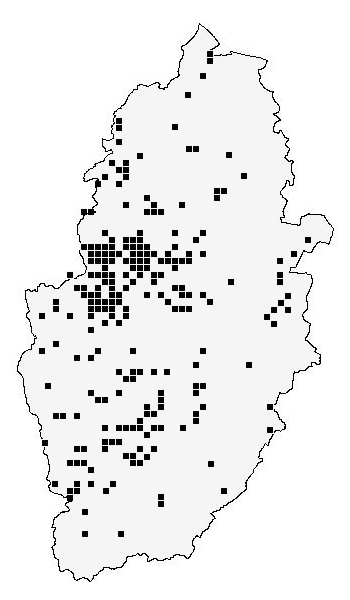| Bumble Bees
are known to everyone and the various species' make up
one of the most familiar group of insects. Whilst some
bees are solitary, Bumble Bees are social insects,
forming small colonies during the Spring and Summer
months. After pairing in the late Summer/Autumn, only the
young Queens survive through the Winter to start new
colonies the following Spring. But there is a seemingly
increasing trend for new colonies to be started by some
species, later the same Autumn after pairing and if
conditions are favourable. Both Queens and workers are
now sometimes recorded during mild Winter days in the
south-west UK. B.terrestris is only likely to be
confused with the similar B. lucorum. In B.terrestris,
the end of the abdomen is usually buff coloured and
generally appears less white or as distinct as that of B.
lucorum. |


